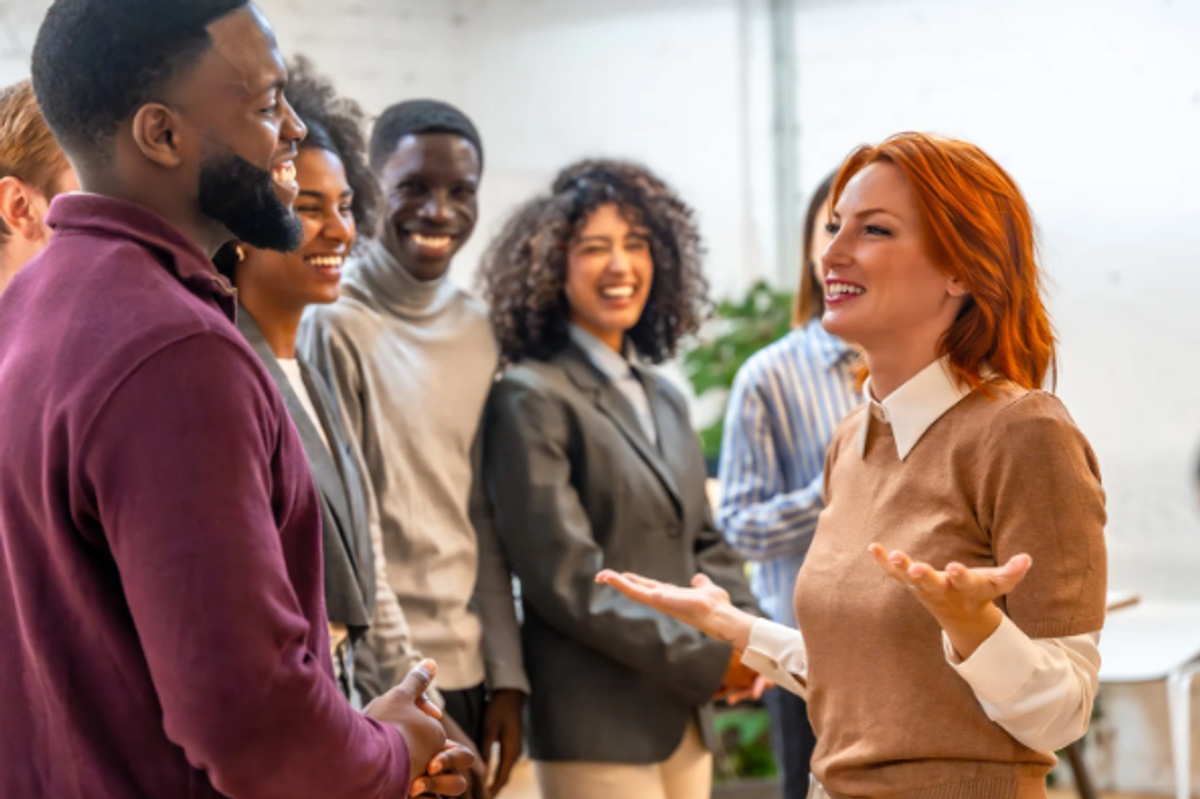I will not wish anybody a 'Happy Labor Day' until these 6 things are figured out. There, I said it.
Those little cartoon drawings in the video? That's really his artwork!
Labor Day at Union Square, New York, 1882. Image public domain.
Labor Day began at a time when working people in the United States were working 12-hour days, seven days a week to survive.
(Hmmm. Sound familiar?)
Children — some as young as 5 or 6 — were working, too, at a fraction of the adult wage. And there were no safety standards, so deaths and injuries on the job were just accepted as a risk of trying to feed yourself and your family.
Unions were beginning to take hold, fighting back against all of this and the Gigantosaur Companies, too.
On September 5, 1882, 10,000 workers took to the streets in New York and marched from City Hall to Wendel's Elm Park — the first Labor Day parade.
Why did they march? For the eight-hour work day. They were tired of working all day and all night.
It actually took 12 years for it to become a national holiday, after a massive strike was put down by federal troops, and Congress decided it was time to appease working people.
Miners with their children at a Labor Day celebration in 1940 Colorado. Image from Library of Congress.
In the video below, economist Robert Reich illustrates what we need in order for Labor Day to have real meaning again in this country. Here are the six things:
1. A living wage
$7.25 is nowhere close to a living wage for anyone. I post things regularly about minimum wage on my public Facebook page, and a consistent pushback from the haters is, "It was never meant to be a living wage."
Oh, yeah? The architect of the minimum wage, none other than Franklin Delano Roosevelt, said some things about that in the years leading up to it first becoming law in 1938:
"No business which depends for existence on paying less than living wages to its workers has any right to continue in this country."
And this:
“By living wages, I mean more than a bare subsistence level — I mean the wages of a decent living." — FDR's Statement on National Industrial Recovery Act, 1933
Image from NHLaborNews.com, used with permission.
The real dollar value of the minimum wage has gone down from a high (in 1968, of about $11) to what it is today, $7.25. Remember that thing about people working 12-hour days, seven days a week, 130-some years ago? People today working for minimum wage frequently have to do exactly that in order to survive.
This doesn't even begin to touch the fact that some tipped workers make $2.13 an hour minimum. Not even kidding.
(And another bonus: When we raise the minimum, it floats all boats.)
GIF from "Oprah."
2. Earned Income Tax Credit
This is something that some politicians are trying to eliminate in some states. What does it do? Basically, it gives tax credits to low-to-moderate income workers, especially those with kids.
3. Child Care
Access to affordable child care is something that working people — moms, especially — need (and frequently don't have) in order to be able to do their jobs and even to rise to better-paid positions in the companies and organizations where they work. Bringing your kid to work sounds like something fun to do maybe one day a year, but otherwise ... umm, no.
GIF from "How I Met Your Mother."
4. Good Schools
Schools make a difference in the lives of the kids who go there, and attacks on education that started with the Great Recession of 2008 continue even today. We need to change our priorities, folks.
5. Health Insurance for all
Obamacare, or the Affordable Care Act, is working and making a difference in the lives of millions of people. But the real solution is a universal health care system — something that the ACA took the place of.
6. Union Rights
Union membership in the private sector is the lowest it's ever been, and good union jobs in the public sector have been under attack for at least a decade, if not 30 years. One primary way we can fix that is through card check recognition — that is, if enough people at a company or work location put their signature on cards that say they want to be members, the company signs off on it and that's it; no campaigns to threaten workers, no long, drawn-out election processes where some workers can be fired (and therefore the rest intimidated).
Here's economist Robert Reich to break it down:
So how to help? Spread this around, first of all. Let's get some people talking about these issues on Labor Day.
And here's a link if you want to sign Reich's petition.





 Princess Odette Girl GIF by The Swan Princess
Princess Odette Girl GIF by The Swan Princess  Rose GIF
Rose GIF  sailor moon GIF
sailor moon GIF  river phoenix 80s GIF
river phoenix 80s GIF 

 A woman meeting her new coworkers.via
A woman meeting her new coworkers.via  A man and woman meeting for the first time.via
A man and woman meeting for the first time.via